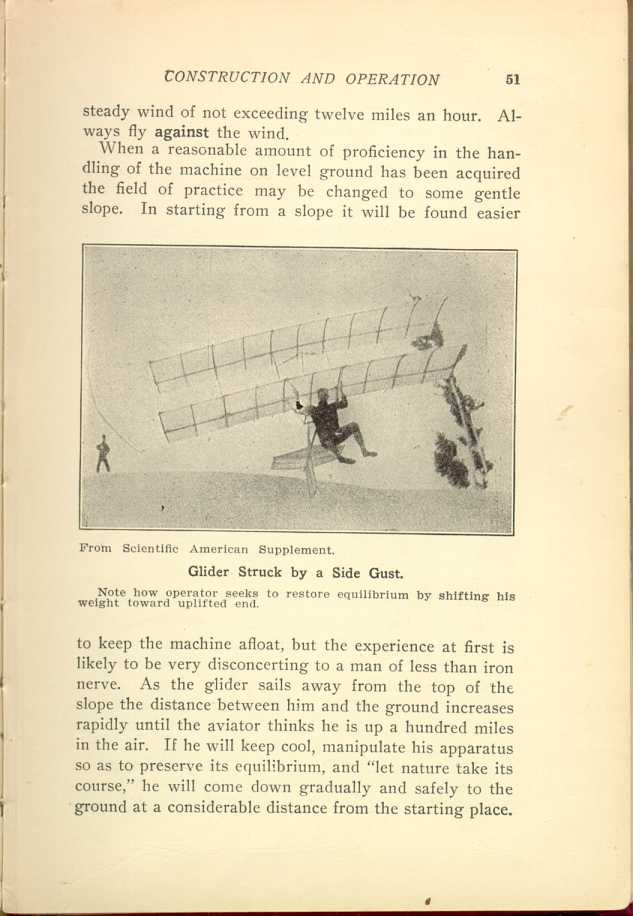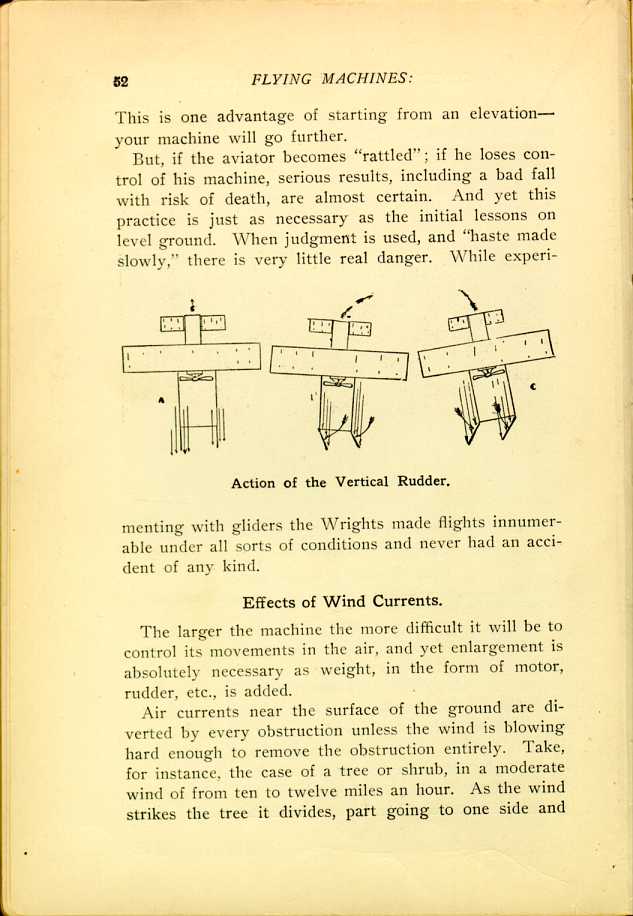| CHAPTER VI.
LEARNING TO FLY. Flying Machines: Construction and Operation: A Practical Book Which Shows, in Illustrations, Working Plans and Text, How to Build and Navigate the Modern Airship. | ||
Maintaining an Equilibrium.
Stable equilibrium is one of the main essentials to successful flight, and this cannot be preserved in an uncertain, gusty wind, especially by an amateur. The novice should not attempt a glide unless the conditions are just right. These conditions are: A clear, level space, without obstructions, such as trees, etc., and a
When a reasonable amount of proficiency in the handling of the
machine on level ground has been acquired the field of practice may be
changed to some gentle slope. In starting from a slope it will be found
easier

From Scientific American Supplement.
[Description: Black and white photograph: Man in glider, off-keel. Tree
blows to the left in background.]
Glider Struck by a Side Gust.
Note how operator seeks to restore equilibrium by shifting his weight
toward uplifted end.
But, if the aviator becomes "rattled"; if he loses control of his
machine, serious results, including a bad fall with risk of death, are
almost certain. And yet this practice is just as necessary as the
initial lessons on level ground. When judgment is used, and "haste made
slowly," there is very little real danger. While experimenting

Action of the Vertical Rudder.
[Description: Black and white illustration: Three-part diagram of aeroplane
illustrating action of rudder.]
| CHAPTER VI.
LEARNING TO FLY. Flying Machines: Construction and Operation: A Practical Book Which Shows, in Illustrations, Working Plans and Text, How to Build and Navigate the Modern Airship. | ||